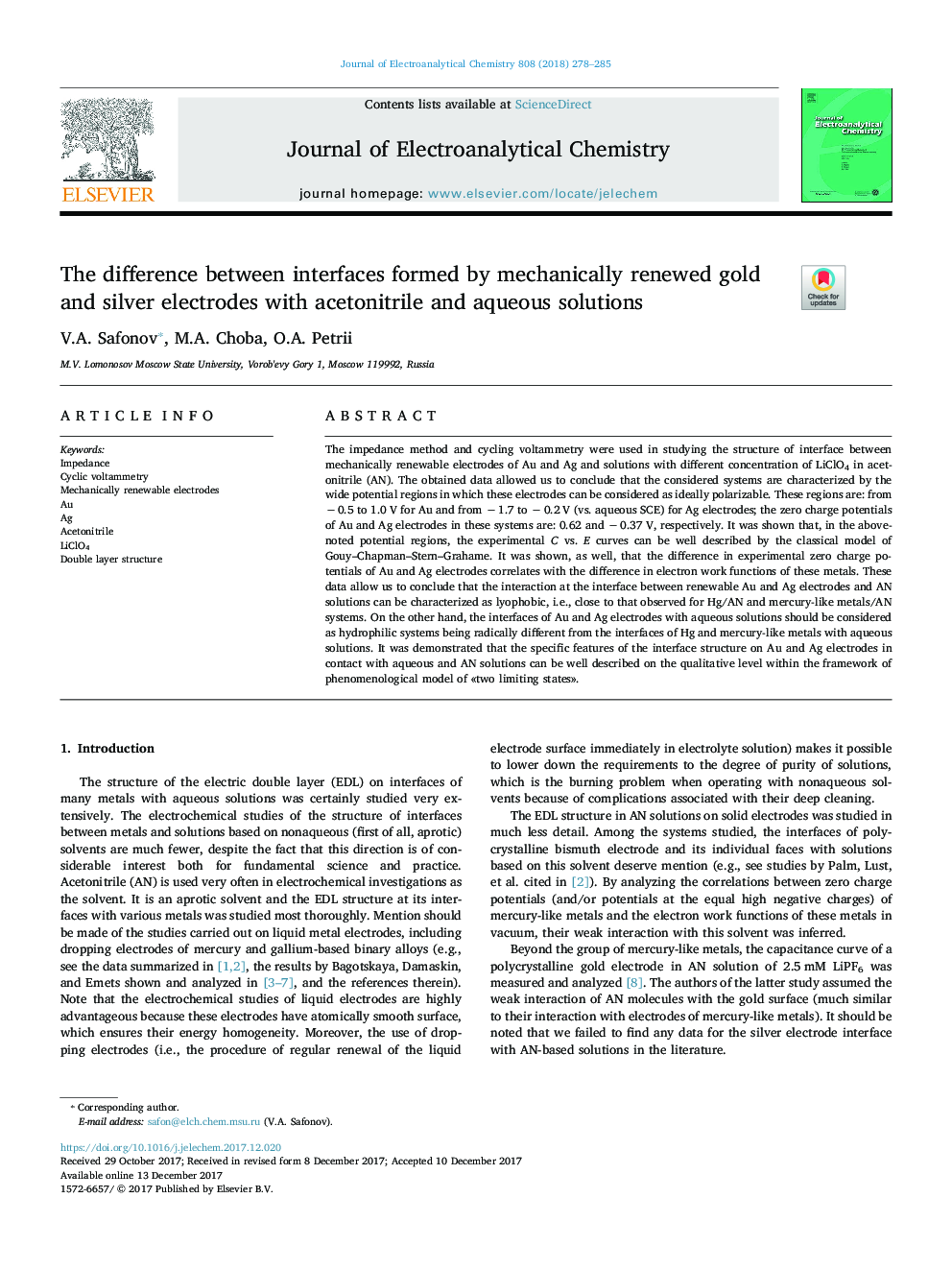| Article ID | Journal | Published Year | Pages | File Type |
|---|---|---|---|---|
| 6662271 | Journal of Electroanalytical Chemistry | 2018 | 8 Pages |
Abstract
The impedance method and cycling voltammetry were used in studying the structure of interface between mechanically renewable electrodes of Au and Ag and solutions with different concentration of LiClO4 in acetonitrile (AN). The obtained data allowed us to conclude that the considered systems are characterized by the wide potential regions in which these electrodes can be considered as ideally polarizable. These regions are: from â 0.5 to 1.0 V for Au and from â 1.7 to â 0.2 V (vs. aqueous SCE) for Ag electrodes; the zero charge potentials of Au and Ag electrodes in these systems are: 0.62 and â 0.37 V, respectively. It was shown that, in the above-noted potential regions, the experimental C vs. E curves can be well described by the classical model of Gouy-Chapman-Stern-Grahame. It was shown, as well, that the difference in experimental zero charge potentials of Au and Ag electrodes correlates with the difference in electron work functions of these metals. These data allow us to conclude that the interaction at the interface between renewable Au and Ag electrodes and AN solutions can be characterized as lyophobic, i.e., close to that observed for Hg/AN and mercury-like metals/AN systems. On the other hand, the interfaces of Au and Ag electrodes with aqueous solutions should be considered as hydrophilic systems being radically different from the interfaces of Hg and mercury-like metals with aqueous solutions. It was demonstrated that the specific features of the interface structure on Au and Ag electrodes in contact with aqueous and AN solutions can be well described on the qualitative level within the framework of phenomenological model of «two limiting states».
Related Topics
Physical Sciences and Engineering
Chemical Engineering
Chemical Engineering (General)
Authors
V.A. Safonov, M.A. Choba, O.A. Petrii,
